Along with other critical call center metrics and Key Performance Indicators (KPIs), call center agent utilization is an important metric that helps managers evaluate agent productivity and performance. Call center agent utilization rate is also closely tied to customer satisfaction and call center’s overall operational efficiency, making it a valuable metric to track in call centers and contact centers.
What is Agent Utilization in a Call Center?
Agent utilization rate shows the percentage of time call center agents spend handling customer calls and performing call-related tasks (known as After Call Work or ACW) or other productive activities out of their total available time during a workday or a specific time period. This way, it serves as an indicator of how effectively agents are utilizing their working hours. A higher utilization rate suggests that call center reps are spending a larger portion of their time on productive activities, while a lower rate may indicate that they aren’t utilizing their time efficiently.
Agent utilization rate is often confused with agent occupancy, which is a related but still different metric. Agent occupancy measures the percentage of time an agent spends handling calls vs. waiting for calls (Agent Idle Time) during the total time they were logged in, while agent utilization is a broader metric that relates to the total time spent working vs. the total working hours, including the time spent on post-call related activities, team meetings, breaks, training, etc.
Why is Call Center Agent Utilization Important?
By consistently keeping track of call center agent utilization rates, leaders and managers can gain a deeper insight into agent performance, identify inefficiencies in call center processes, procedures, and operations, optimize workforce management, and ensure optimal resource allocation.
A high utilization rate is usually perceived as good, meaning agents handle more customer interactions and aren’t wasting their work time, which also contributes to lowering your cost per call and generally helps reduce call center costs. However, it may also indicate that agents are overburdened, which may eventually result in burnout, low morale, decreased engagement, and increased turnover. Low agent utilization, on the contrary, means that agents are underutilized, lowering your overall call center productivity and increasing your cost per call.
How to Calculate Call Center Agent Utilization
Agent utilization rate is typically calculated as the percentage of an agent’s productive time (when they are actively handling calls and doing post-call related duties) compared to their total available time (the number of working hours per day x 60). The standard call center utilization formula is the following:
Agent Utilization Rate = (Total Talk Time + Total After-Call Work Time) / (Total work hours x 60) x 100
Different call center software systems may have different ways of presenting call center agent utilization metrics through analytics and reporting. But the underlying concept remains the same: utilization rate measures how efficient agents are in utilizing their available work time.
How to Set Agent Utilization Goals
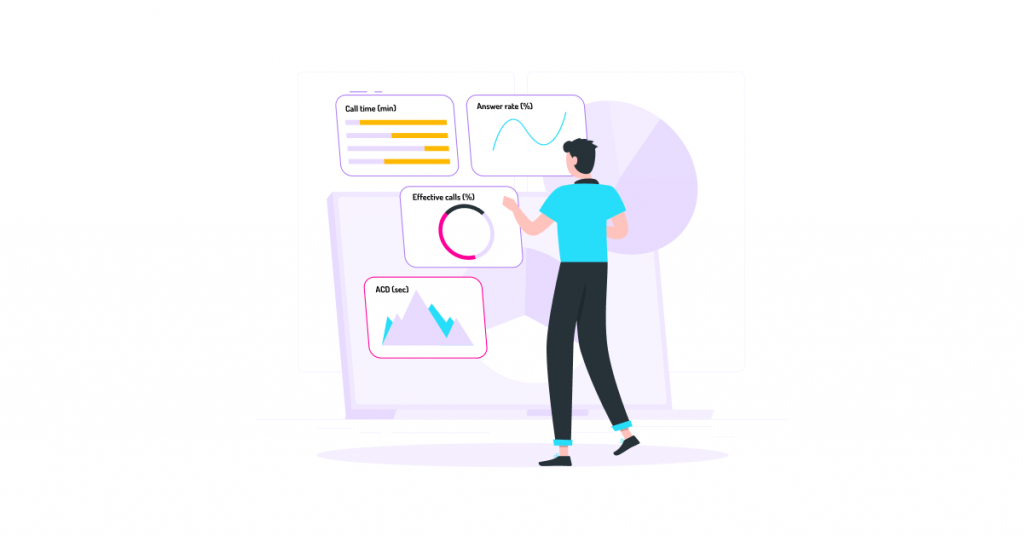
When setting agent utilization goals, it’s important to select specific metrics and KPIs that will be used to measure utilization rates. These commonly include the Average Handle Time, After-Call Work Time, Idle Time, Occupancy Rate, and others. The selected metrics must provide valuable insights and align with the call center’s objectives.
Other things to take into account when setting utilization goals are the business type and industry, types of calls agents mainly deal with (inbound, outbound, or both), typical call volumes and call complexity, the size of the call center, and staffing levels.
E.g., in outbound call centers, where agents are primarily involved in making large volumes of outbound phone calls, they would often have minimal idle time between calls and are expected to maintain high productivity levels, which means higher utilization rates. Inbound call centers, on the other hand, may experience fluctuating call volumes, which means agents might have more periods of idle time between calls when call volumes are lower, resulting in lower utilization rates compared to outbound call centers.
According to data from MetricNet, the average agent utilization rate for service desks is around 48%, but this number can significantly vary, from a low of 22% to a high of 76%. However, aiming for a high agent utilization rate is not always recommended. Whenever utilization rates approach 60-70%, a call center team may experience increased agent burnout, leading to low morale and higher agent turnover, which may increase the overall operational costs of a call center.
The key is to find a healthy balance between agent productivity, service quality, and agent well-being. It’s also advisable to regularly assess the progress towards achieving your agent utilization goals and make adjustments, if necessary, based on factors like changes in call volumes or staffing levels.
How to Improve Call Center Agent Utilization Rate
Below are some of the best strategies call centers and contact centers can employ to improve agent utilization rate and productivity while maintaining high levels of customer service and customer satisfaction.
Call center technology
Equipping agents with advanced call center software technology is essential to improving utilization rate through automating and optimizing call center’s processes and operations. Some of the most valuable call center tools and technologies that can help call centers increase utilization rate are the following:
Skill-based routing
Skill-based routing connects incoming callers to agents with the most relevant skills and expertise to handle certain issue types. That enables agents to resolve issues faster and more efficiently, eliminates call transfers and escalations, and reduces the Average Handle Time, which means agents will be utilizing their time more productively, increasing the utilization rate.
Auto dialer software
Predictive dialers are critical tools for sales-oriented outbound call center teams. Like other types of auto dialer software systems, predictive dialers remove the need for manual dialing and automate and optimize the entire process of making outbound calls. Furthermore, the system connects prospects to agents as soon as an agent completes their interaction. It helps minimize Agent Idle Time between calls and ensures agents can make more outbound calls in less time, which increases their productive time and utilization.
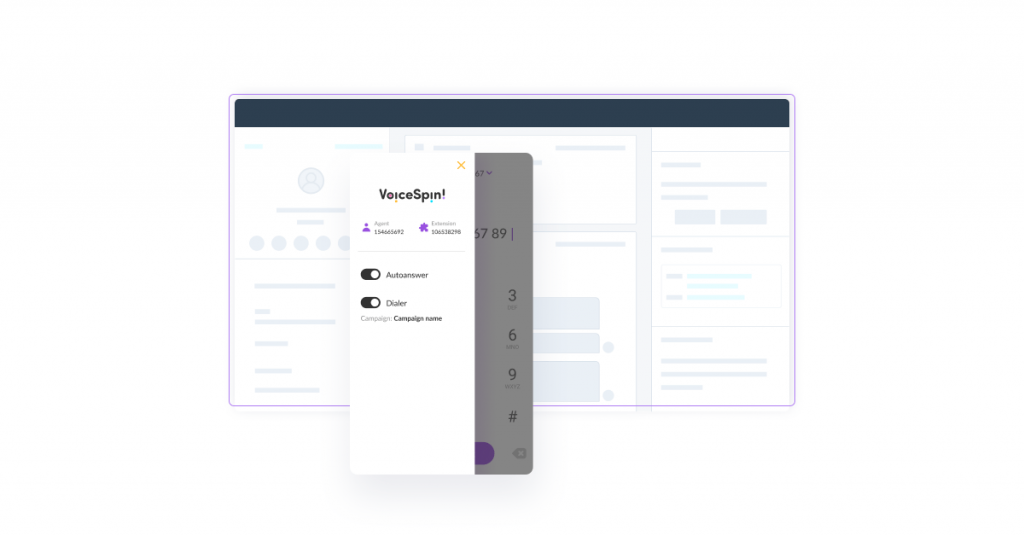
E.g., VoiceSpin’s AI Auto Dialer software employs predictive algorithms and an intelligent lead/ agent scoring and matching system that connects leads to the best-fitting agents based on the probability of making a sale, increasing the number of relevant interactions and successful conversions and ensuring agents’ time is utilized in a highly productive way.
Integrated CRM
By integrating call center software with a CRM (Customer Relationship Management) system, agents will have instant access to all the relevant information about callers, including the history of previous interactions, past purchases, and call recordings. That means agents will not have to waste their working time switching between multiple systems and searching for customer information manually.
Internal knowledge base
With a comprehensive internal knowledge base that includes well-documented issues, troubleshooting steps, and resolutions, agents will be able to easily locate the necessary information, helping them resolve queries and troubleshoot customer issues more quickly, effortlessly, and efficiently, and utilize their time more productively while also improving handle times and First Call Resolution rates. In addition, it helps reduce training time for new team members.
Optimized agent training
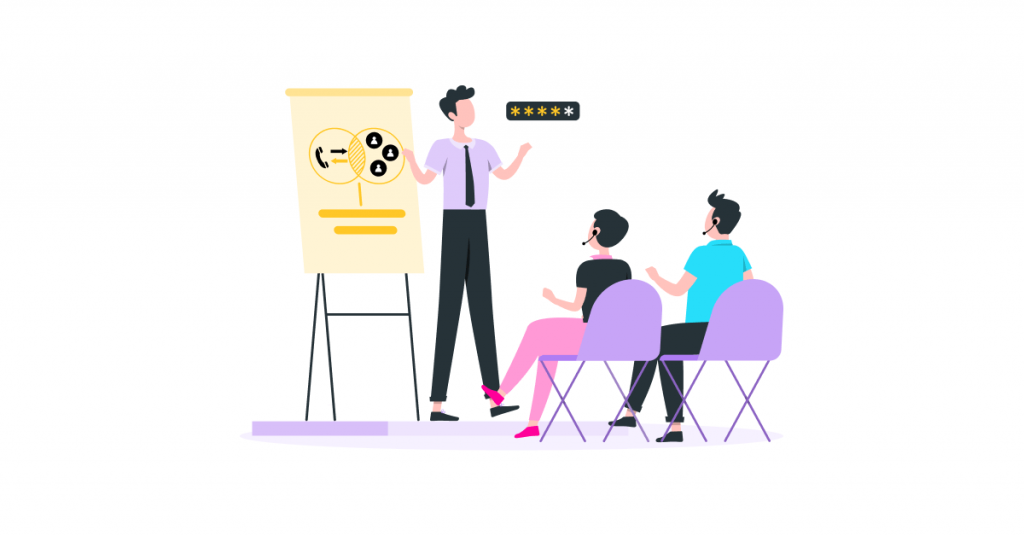
Since agent training is one of the most time-consuming activities contributing to increased shrinkage (i.e., the time when agents are not available to handle customer interactions due to factors like breaks, team meetings, training, coaching, etc.), optimizing agent training can improve utilization rates. Managers can reduce and optimize agent training time by leveraging call recordings, real-time call monitoring, and speech analytics software tools.
Performance monitoring and coaching
Managers should regularly monitor agent performance and productivity metrics and KPIs to identify areas for improvement and agent coaching opportunities. These may include metrics like the Average Handle Time, First Call Resolution (FCR) Rate, Call Transfer Rate, Call Abandonment Rate, Customer Satisfaction Score (CSAT), Service Level Agreement (SLA) Adherence, Occupancy Rate, Schedule Adherence, and Agent Absenteeism Rate. Consistently tracking these metrics and implementing timely measures through coaching and process optimizations can help improve agent performance and utilization.
Engagement and motivation
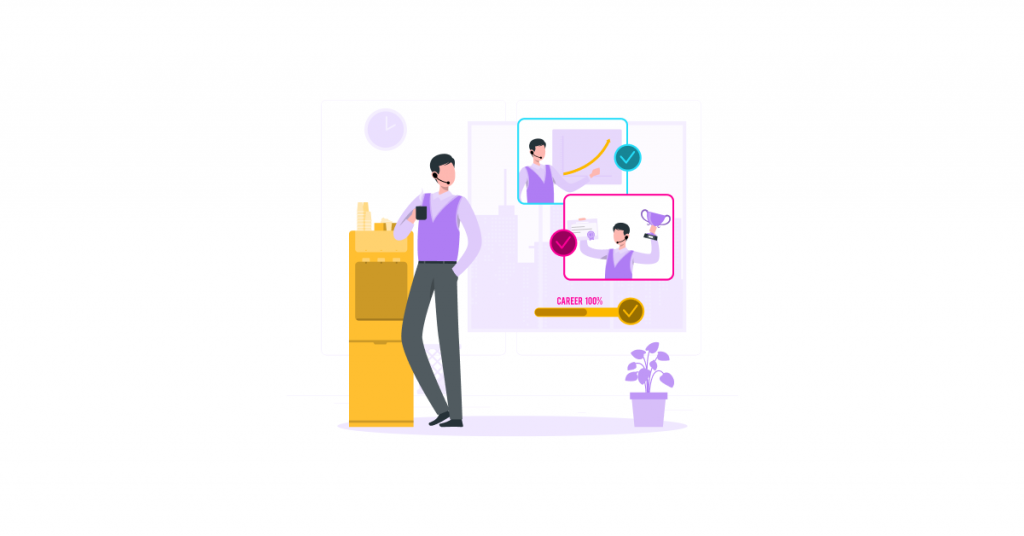
Prioritizing employee engagement, offering well-being initiatives, and providing incentive programs for motivating agents can help call centers increase engagement levels, improve job satisfaction, and reduce burnout, absenteeism, and attrition. Highly engaged and satisfied agents are more likely to be more productive and committed to meeting their performance targets and utilization goals.
Integrated communication channels
Integrating various communications channels (like phone, email, social media, live chat, and Instant Messaging apps) into a single omnichannel contact center platform can greatly contribute to improving agent utilization. It allows agents to manage customer interactions through multiple contact center communication channels, ensuring they stay engaged and productive and maximizing agent utilization by reducing agent idle time between calls.
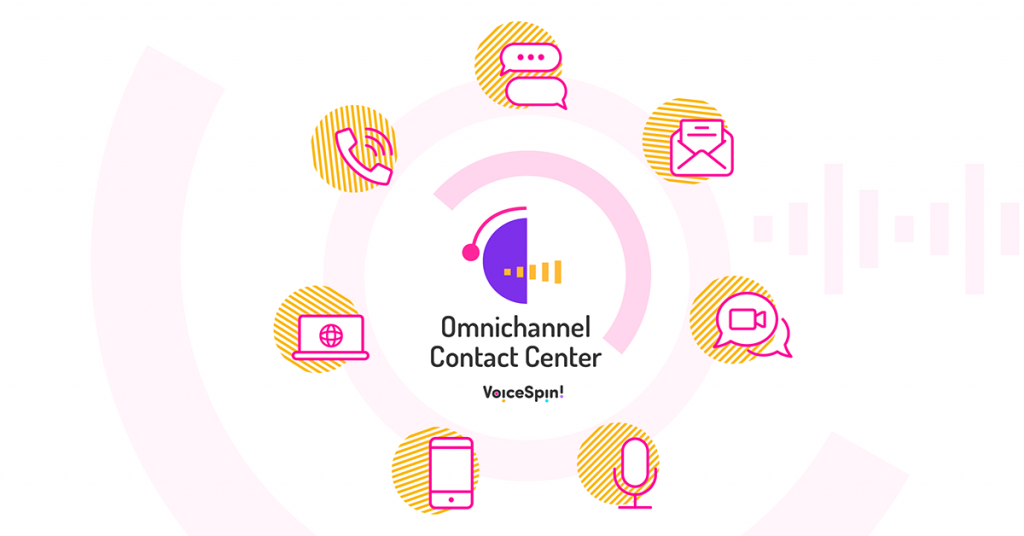
FAQs
What is the definition of call center utilization?
Agent utilization represents a call center metric that measures the percentage of time agents are involved in productive activities (handling inbound calls, making outbound calls, doing post-call related work, etc.) as opposed to their total available time. Utilization rate provides insight into how effectively agents are utilizing their working hours.
What is a good utilization rate for a call center?
A commonly accepted good benchmark for call center agent utilization is around 75%. However, that number may significantly vary based on several factors, including the type of industry, size of the call center, specific goals, and operational requirements.
How to track utilization for a call center agent?
Like other metrics and KPIs, agent utilization can be tracked through reporting and analytics capabilities of call center software systems. Call center managers and supervisors can get insights from reports or keep track of agent activities in real time through real-time monitoring tools and dashboards.
What is the difference between agent occupancy and utilization?
Agent occupancy, or call center occupancy, measures the percentage of time agents are engaged in customer interactions during their logged-in time, while agent utilization is a broader measure that relates to the percentage of agents’ productive time compared to their total working hours.

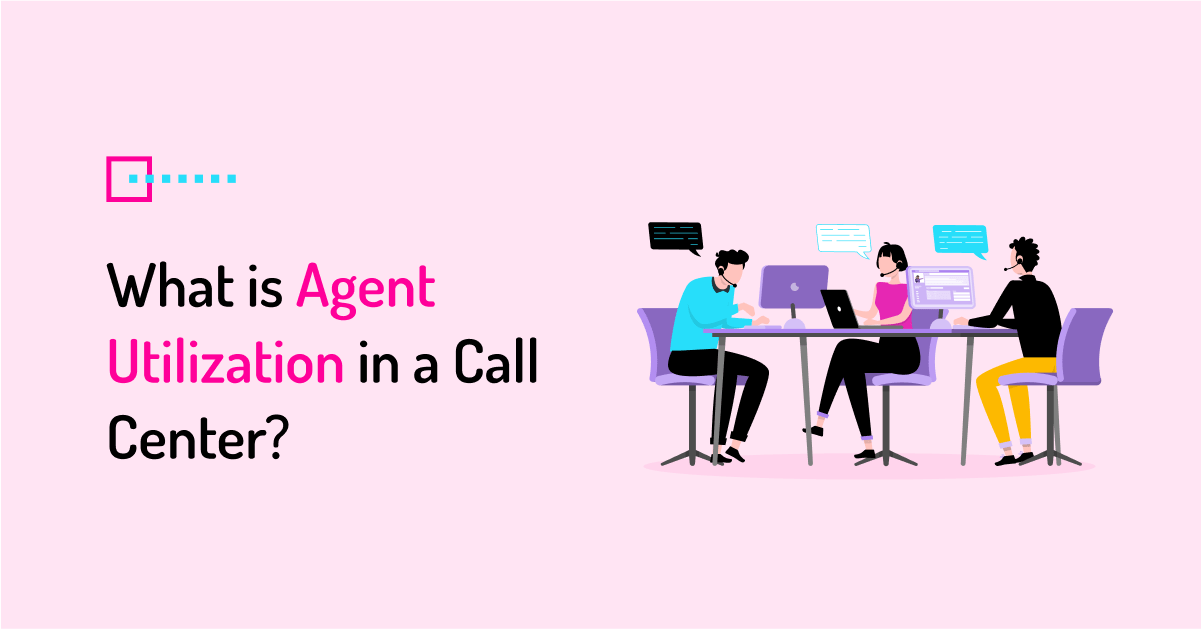

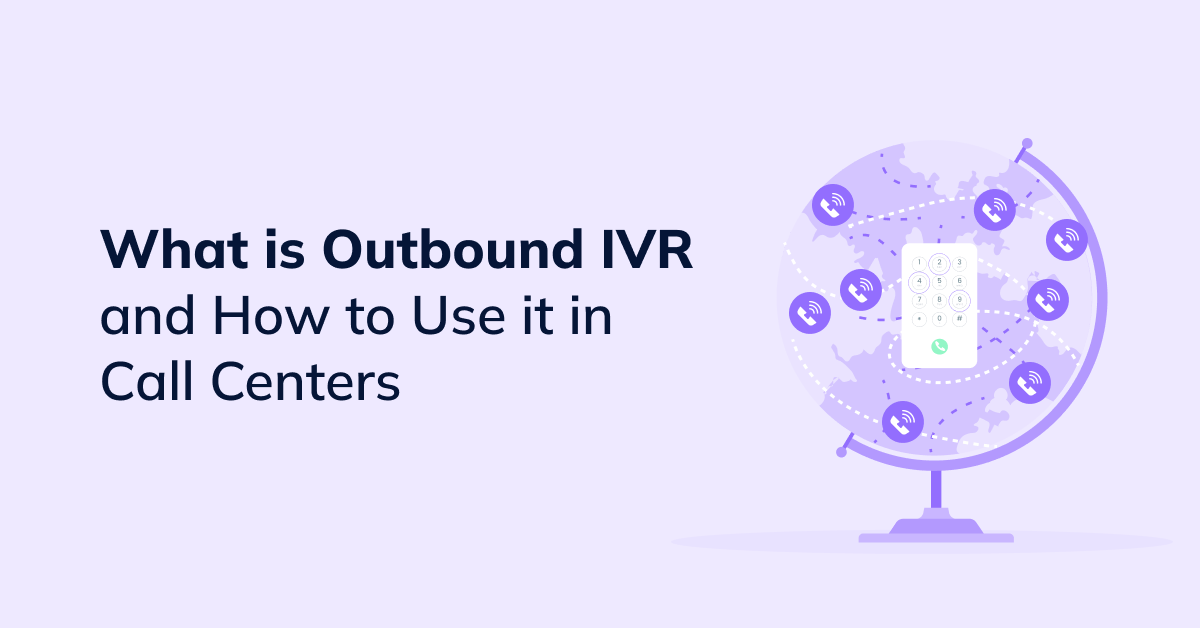
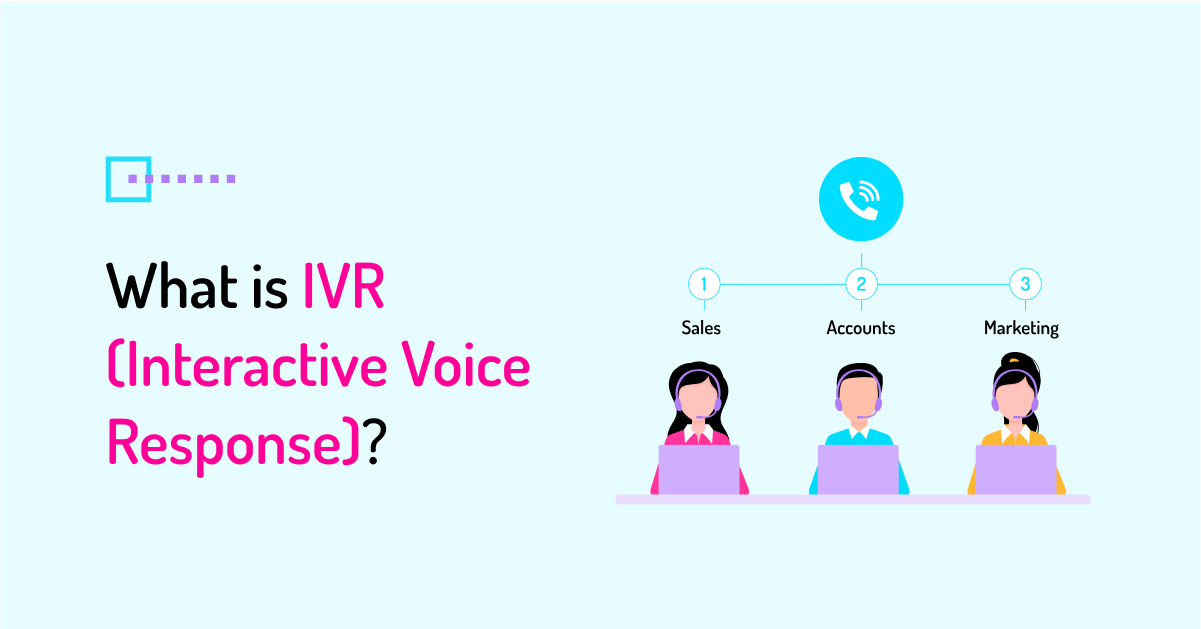
 +18889082995
+18889082995
 +442036084160
+442036084160
 +97237237006
+97237237006